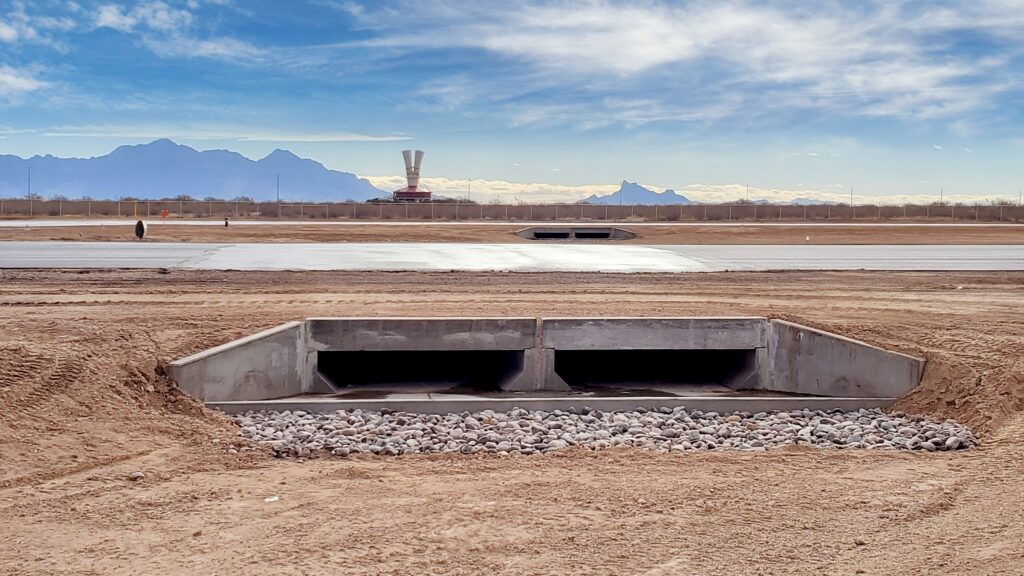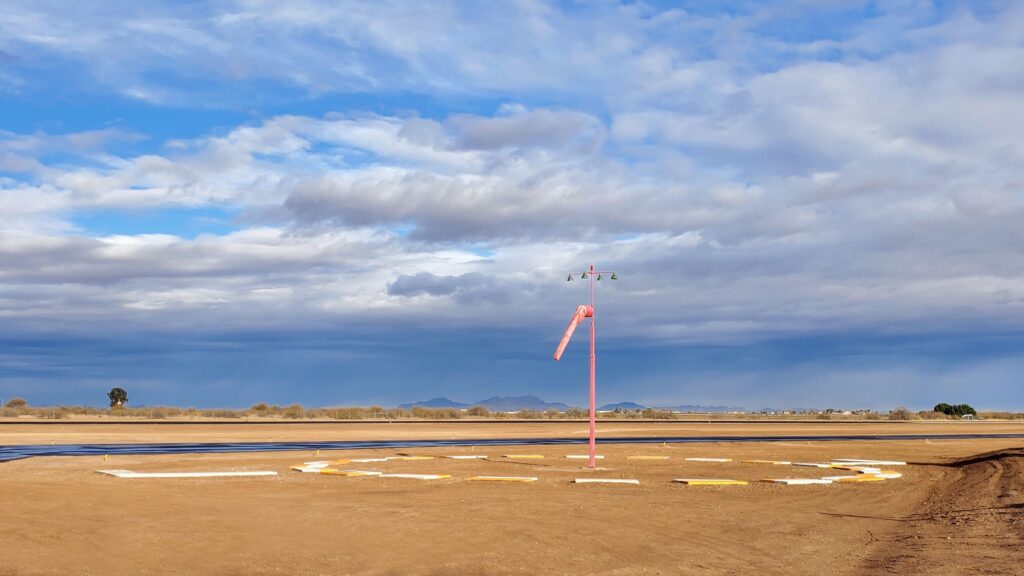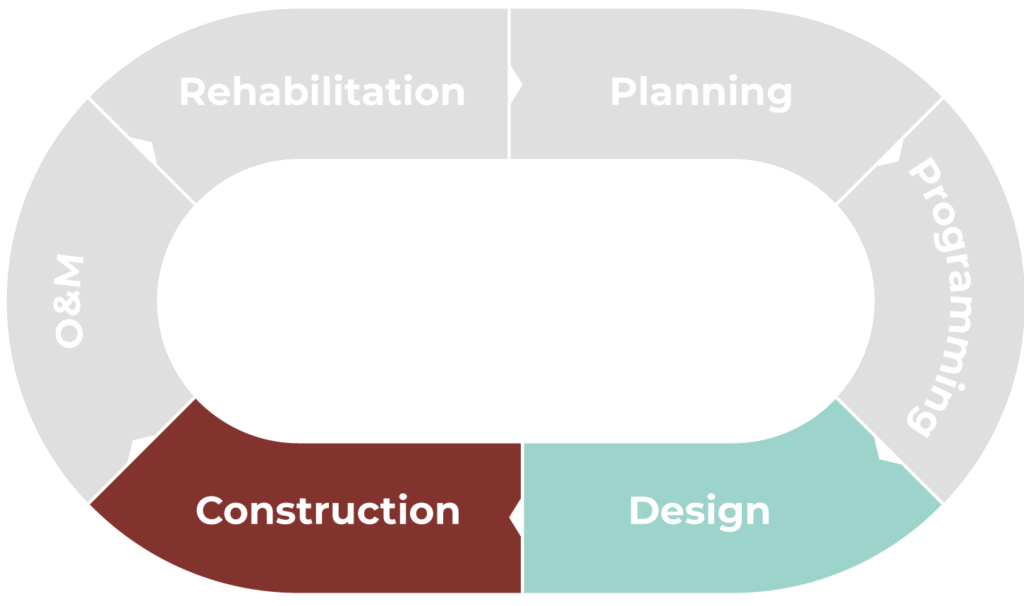Eloy Municipal Airport Taxiway A Relocation and Drainage Improvements
For the last two decades, Eloy Municipal Airport had been operating with a substandard separation of 200 feet between its main runway and the parallel taxiway. For the type of aircraft that the airport is designated to accommodate, the Federal Aviation Administration (FAA) dictates that this separation must be at least 240 feet to provide sufficient distance for aircraft to safely operate from the air and on the ground, as well as provide an adequate buffer in the event that aircraft deviate from the runway surface. The airport also faced numerous drainage challenges including standing water after rain events, which created unwanted attractants for birds. These issues presented serious safety issues for the flying public and the safe movement of aircraft around the airfield. As the prime consultant, Dibble provided the guidance and technical expertise to address these concerns.
The Dibble team navigated the complex process of FAA coordination and approvals, including planning, environmental clearance, and re-justification of the project in the midst of changing FAA staff. We also solved the technical challenges of the project including unique utility hurdles, the application of relatively new FAA geometry standards, and differentiating work from separate granting agencies (FAA and the Arizona Department of Transportation [ADOT] Aeronautics), all while balancing stakeholder engagement and maintaining a safe, active airfield.
Some of the most unique challenges and resulting successes from the Taxiway A Relocation and Drainage Improvements project included coordinating with the Central Arizona Irrigation and Drainage District (CAIDD) and its consultant for approval of the airfield drainage outfall across an irrigation channel siphon; developing an FAA-approved Construction Safety and Phasing Plan (CSPP) that focused on maintaining a safe operational environment for aircraft while providing appreciable work zones for the contractor; and developing bid alternates and flexible bid language for the City of Eloy to award the construction contract based on the requirements from multiple granting agencies requiring low bids for their respective pieces of work.

Our team also incorporated two-dimensional drainage modeling software, FLO-2D, to refine the outputs and design recommendations previously identified in the Airport Drainage Master Plan (ADMP). By utilizing this program, Dibble reduced the drainage and conveyance infrastructure, such as channel widths and box culvert sizes, and maximized the graded clear zones along the taxiways. This provided an increased level of safety for aircraft utilizing the facilities, as well as cost savings during construction.
Per current FAA standards, Taxiway A needed to be relocated a minimum of 240 feet away from the main runway. However, it was anticipated that the taxiway would eventually need to be relocated 300 feet away from the runway due to projected aircraft operations and airport growth. Dibble developed detailed a cost-benefit analysis comparing the option of relocating Taxiway A to 300 feet away from the main runway at the current time, versus relocating the taxiway 240 feet now and then relocating it 300 feet sometime in the future. Ultimately, the City of Eloy decided on a 300-foot separation, which provided a longer-term solution and significant cost savings.

The Dibble team worked together to successfully deliver this unique and complicated project, accomplishing the work within the allowable 7-day closure, and met the deadline for the reopening of the airport as planned. Dibble provided construction administration services, and Dibble CM provided construction inspection during the construction period. Construction was successfully completed under budget and more than two months ahead of schedule.
Details
Client
City of Eloy
Location
Eloy, AZ
Scope
$602K
Total Cost
$6.16M
Project Lifecycle

